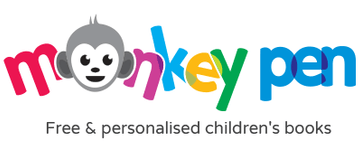Preschool Precision: Developing Prewriting Skills Through Coloring (Ages 4-5)
Nov 14, 2025
When parents think about kindergarten readiness, they usually think of counting, ABCs, and even name writing. One of the less talked about overlooked stepping stones towards the writing path is to color. Indeed, the basic act of filling in shapes using crayons or colored pencils can be a great way to acquire writing abilities. In this article, we'll discuss how the right activities for preschoolers can help prepare children for formal writing and the way that kindergarten readiness coloring routines help build confidence and improve control in 4 to 5-year-olds.
What Are Prewriting Skills?
Before a child is able to write clearly, several fundamental skills must be present. They include:
- Fine motor control- the ability to move tiny muscles of fingers and hands.
- Hand-eye coordination- determining in a visual way where your shade (or pencil) should be.
- Pencil grasp or crayon grip: the art of holding an instrument comfortably and securely.
- The ability to see spatial and direction -recognizing left and right, upwards and downwards, and the spacing between letters or shapes.
- Pressure and strokes that are controlled, knowing the amount of force needed, so that lines are clearly visible while not damaging the paper.
The blocks allow children to trace their designs, ultimately write, as well as freehand write words and letters.
How Coloring Helps Build Prewriting Skills
Coloring might appear to be nothing more than "fun," but it naturally strengthens several similar muscles, as well as helps with the control required for writing.
- Controlled strokes and staying within lines. When children draw within boundaries, they learn the art of precision. As they grow older, they improve their ability to keep track of edges.
- Pressure variations that are darker, more dense strokes vs light shadings help them master hand tension.
- Persistence and focus. Concentrating on a single section increases attention spans, a skill that is required for longer writing assignments.
- In the visual-motor feedback loop, they are able to see the direction their hands move in real-time and adjust to stay within the contour.
- Coloring activities can be a secure, fun "training ground" for the grasp, coordination, and control required in the future.
Age 4-5: What Children Can Handle & What to Encourage
From the ages of 4 to 5 years, children usually take huge strides to control; however, they're still testing their limits. What can you anticipate, and what things should you encourage:
- They can take care of the larger shapes, which are divided into smaller areas with a simpler outline and quick color sessions (5 or 10 minutes).
- Common issues: coloring beyond the line, fatigued fingers, loosening grips, being bored, or annoyed.
- Scaffolding: Begin by making large, bold shapes and gradually add more details. Encourage improvement, not perfection.
Preschool Coloring Activities to Boost Prewriting Skills
Here are some specific preschool coloring activities that are in line with prewriting skills:
- Large shape and color
Utilize large outlines (trees, houses, or animals) to let children learn how to fill the space before moving on to smaller, inner areas.
- Dot-to-dot coloring or connect-the-dots using color fill.
Children can trace or connect simple numbers and outlines, then color them in - Combining coloring and tracing.
- Sections or patterns (stripes or checks)
Pages that contain internal divisions (like shapes divided into squares, triangles, or triangular shapes) can help you practice accuracy in smaller areas.
- Colorful paths or mazes
Color along a route or in a path from beginning to finish helps reinforce following the lines with a steady pace.
- Mini pixel coloring
Tiny "squares" or "pixels", in which children can color each cell. This is great for constant control.
- A variety of media for coloring
Encourage the use of crayons, colorful pencils, as well as gel crayons. The changing of tools can help the child adjust to pressure and grip.
Tips to Make Coloring Work for Kindergarten Readiness
To make the preschool readiness coloring an actual activity (not just a passing-time activity), consider these suggestions:
- Utilize genuine coloring tools: Provide the correct pencils or crayons, instead of crayons that are too heavy or tools that don't require grip.
- A gradual choice of difficulty. Children should be allowed to choose easy pages first, and then gradually increase the complexity as their confidence builds.
- Positive feedback, not pressure: Encourage tidiness, but do not scold anyone who goes outside the boundaries. Recognize effort, control, and love.
- Discuss the topic. Talk about it: Ask "Which color do you want to pick? Which reason?" or "What's the most difficult part of coloring?" This builds planning and metacognition.
- Regular, short-term sessions. Instead of a 45-minute marathon, a 5-10-minute daily or every other day coloring routine works better.
- Stories or themed pages: Combine coloring with storytelling (e.g., "Color the fields, then tell me who lives there") to keep the interest at a high level.
- Color through numerals or with guided coloring. Shows the neatness of coloring and encourages children to follow guidelines.
Integration of Coloring into a Broader School Readiness Strategy
Coloring on its own won't replace other skills for readiness. However, it's an excellent addition. Here's how to incorporate:
- Utilize the worksheets for tracing, cutting, and pasting, block play, as well as letter play. Playdough for strength in the fingers.
- Create a routine or daily coloring routine.
- Be aware of your posture, grip, or fatigue. Should you observe tension in your fingers, cut down on the time or switch tools.
- Keep track of progress over time: Over the course of weeks, your child should be showing more steady strokes, fewer "out of bounds" areas, and more patience.
- Let coloring develop into drawing free (drawing shapes and letters) as your motor skills become more solid.
Sample Weekly Activity Plan (for a 4- to 5-Year-Old)
This six-week plan of activities gradually builds a 4- to five-year-old's ability to colour step-by-step. The plan begins with broad strokes and big shapes. It allows youngsters to practice filling in wide spaces before progressing to shapes that are divided, where they color in different sections. In the following week, kids will be working on simple mazes and twisting paths to understand the rules. For the final week of school, they'll be focusing on mini-mosaics and grids, which will help them develop the ability to focus and consistency in coloring small squares in progress. Following the fifth week, themes such as animal or zoo themes can spark discussion about color and plan, helping kids to make sense of their choices more clearly. Last week allowed them to draw simple shapes and color them, which celebrates their creativity and uniqueness. Altogether, this plan builds control, focus, and confidence-important foundations for writing readiness.
Preparing for the Future!
Preschool precision is crucial; the first early sketches and colorings are not just for enjoyment. They're also quite beneficial to help develop the prewriting skills, which are essential to handwriting success in kindergarten. Through creative preschool coloring activities and integrating preschool readiness coloring activities into the daily routines, parents can help their children aged 4 and 5 transition into school with more confidence, control, and enthusiasm.
If you're eager to begin, you can try one of Monkey Pen's carefully selected Kindergarten readiness coloring pages to watch your child's stroke accuracy and focus improve every day. Little, consistent steps lead to massive strides towards learning.
Why not try it? Choose one of Monkey Pen's free printable coloring books, and create your own sensory experience. The website also has various educational resources, such as educational posters, children's books, and workbooks that include dots. All are available in PDF format at absolutely no cost.


